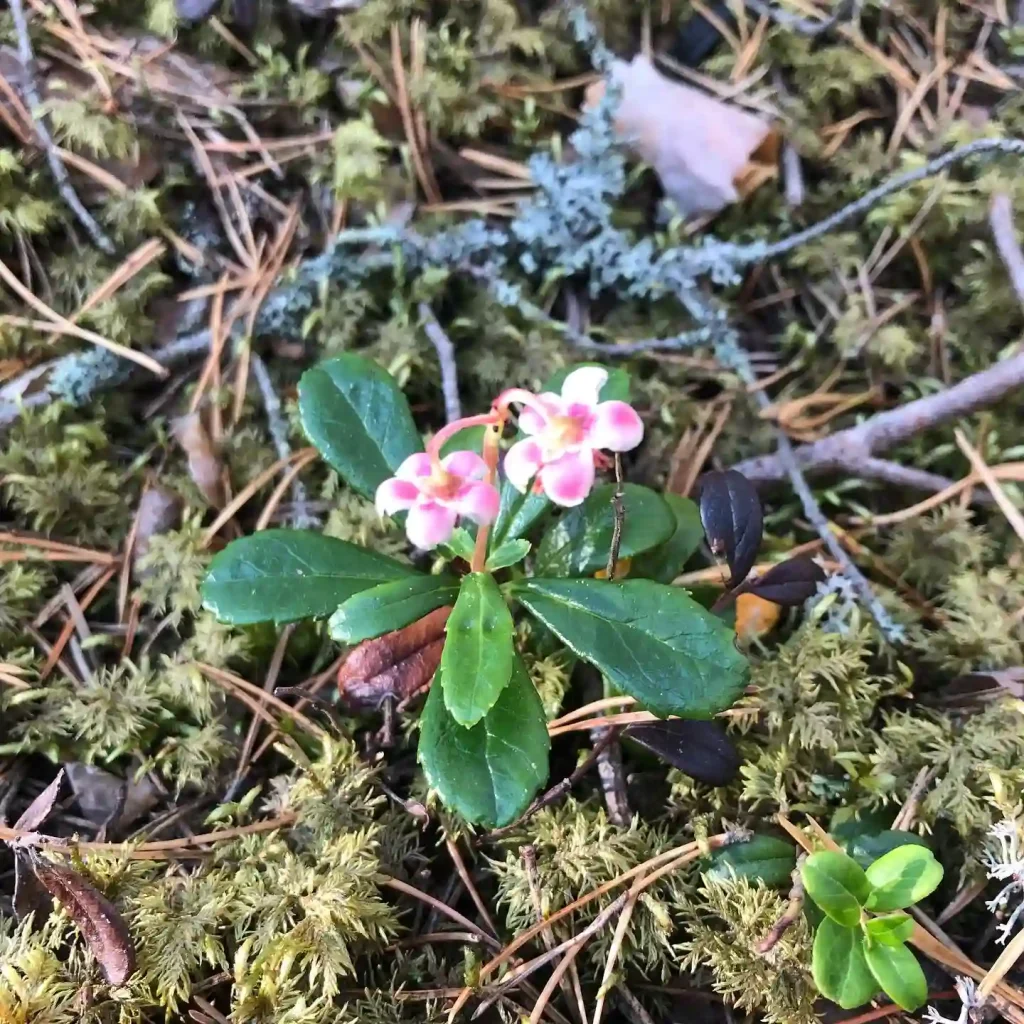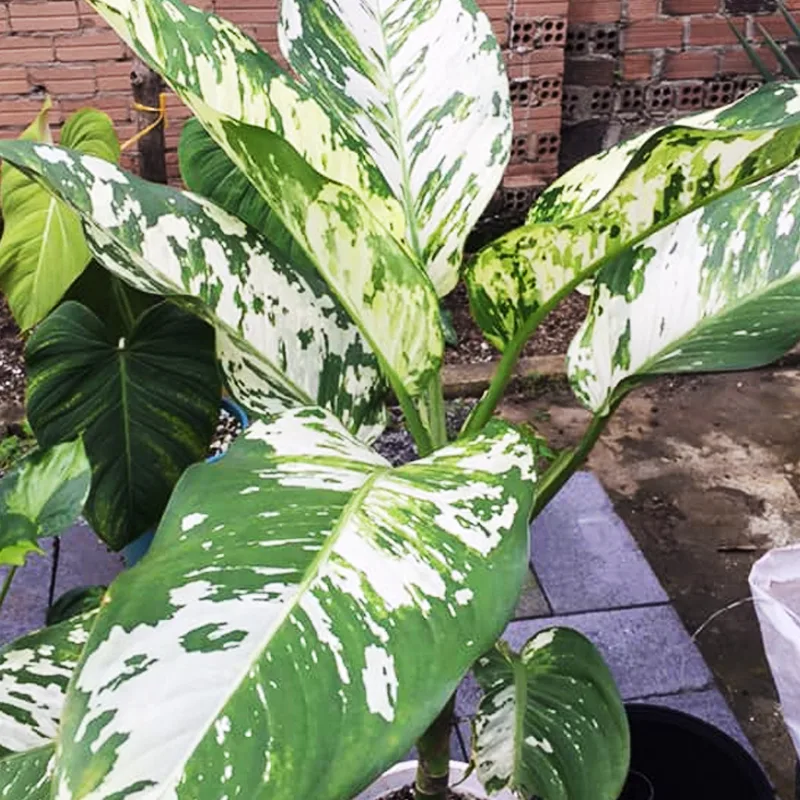
October 4 – Artemisia
"Artemisia, the sagebrush, represents October 4."
Artemisia symbolizes wisdom and protection. You offer guidance and strength to those around you. Like its soothing properties, your presence is comforting.
The World of Artemisia: A Personal Exploration
My name is Ferb Vu, and I’ve always been fascinated by the natural world, particularly the diverse and often overlooked world of plants. One genus that has captured my attention is Artemisia, a group of hardy herbs and shrubs belonging to the Asteraceae family, Asteraceae. With their distinctive aromas and silvery foliage, these plants have a long and storied history, entwined with human culture and medicine for millennia. Join me as I delve into the fascinating world of Artemisia, exploring its diverse species, unique characteristics, and enduring legacy.
A Diverse Genus
Artemisia is a large genus with over 500 species. These plants are incredibly versatile, thriving in a variety of environments, from the arid steppes of Central Asia to the coastal regions of North America. This adaptability is reflected in the sheer variety of forms Artemisia takes, ranging from low-growing herbaceous plants to towering shrubs.
- Artemisia abaensis Y.R.Ling & S.Y.Zhao
- Artemisia abbreviata (Krasch. ex Korobkov) Krasnob.
- Artemisia abolinii Lazkov
- Artemisia abrotanum L. Plant FAQs: Artemisia Abrotanum – Southernwood
- Artemisia absinthium L.
- Artemisia abyssinica Sch.Bip. ex Oliv. & Hiern
- Artemisia aculeata Charit.
- Artemisia adamsii Besser
- Artemisia aethiopica L.
- Artemisia aflatunensis Poljakov ex U.P.Pratov & Bakanova
- Artemisia afra Jacq. ex Willd.
- Artemisia aksaiensis Y.R.Ling
- Artemisia alata Charit.
- Artemisia alba Turra
- Artemisia albicans Sòn.Garcia, Garnatje, McArthur, Pellicer, S.C.Sand
- Artemisia albicaulis Nevski
- Artemisia aleutica Hultén
- Artemisia algeriensis Filatova
- Artemisia alpina Pall. ex Willd.
- Artemisia amoena Poljakov
- Artemisia amygdalina Decne.
- Artemisia andersiana Podlech
- Artemisia anethifolia Weber ex Stechm.
- Artemisia anethoides Mattf.
- Artemisia angustissima Nakai
- Artemisia annua L. Plant FAQs: Artemisia Annua – Sweet Wormwood
- Artemisia anomala S.Moore
- Artemisia aralensis Krasch.
- Artemisia araxina Takht.
- Artemisia arborescens L.
- Artemisia arbuscula Nutt.
- Artemisia arctisibirica Korobkov
- Artemisia arenaria DC.
- Artemisia arenicola Krasch. ex Poljakov
- Artemisia argentea L’Hér.
- Artemisia argyi H.Lév. & Vaniot Plant FAQs: Artemisia Argyi
- Artemisia argyrophylla Ledeb.
- Artemisia armeniaca Lam.
- Artemisia aschurbajewi C.Winkl.
- Artemisia assoana Willk.
- Artemisia assurgens Filatova
- Artemisia asymmetrica Charit.
- Artemisia atlantica Coss. & Durieu
- Artemisia atrata Lam.
- Artemisia atrovirens Hand.-Mazz.
- Artemisia aucheri Boiss.
- Artemisia aurantiaca Charit.
- Artemisia aurata Kom.
- Artemisia auriculopinnata Charit.
- Artemisia australis Less.
- Artemisia austriaca Jacq.
- Artemisia austrohimalayaensis Y.R.Ling & Puri
- Artemisia austroyunnanensis Y.Ling & Y.R.Ling
- Artemisia avarica Minat.
- Artemisia badghysi Krasch. & Lincz. ex Poljakov
- Artemisia baimaensis Y.R.Ling & Z.C.Chuo
- Artemisia balchanorum Krasch.
- Artemisia baldshuanica Krasch. & Zopr.
- Artemisia banihalensis M.K.Kaul & S.K.Bakshi
- Artemisia bargusinensis Spreng.
- Artemisia barrelieri Besser
- Artemisia bashkalensis Kurşat & Civelek
- Artemisia baxoiensis B.H.Jiao & T.G.Gao
- Artemisia bejdemaniae Leonova
- Artemisia bhutanica Grierson & Spring.
- Artemisia bicolor Rech.f. & Wagenitz
- Artemisia biennis Willd.
- Artemisia bigelovii A.Gray
- Artemisia blepharolepis Bunge
- Artemisia borotalensis Poljakov
- Artemisia brachyloba Franch.
- Artemisia brachyphylla Kitam.
- Artemisia brevifolia Wall. ex DC.
- Artemisia × burnatii F.O.Wolf
- Artemisia caerulescens L.
- Artemisia caespitosa Ledeb.
- Artemisia calcicola X.Q.Guo & L.Wang
- Artemisia californica Less. Plant FAQs: California Sagebrush – Artemisia Californica
- Artemisia calophylla Pamp.
- Artemisia camelorum Krasch.
- Artemisia campbellii Hook.f. & Thomson ex C.B.Clarke
- Artemisia campestris L.
- Artemisia cana Pursh
- Artemisia capillaris Thunb. Plant FAQs: Artemisia Capillaris – Capillary Wormwood
- Artemisia capitata (Nutt.) Sòn.Garcia, Garnatje, McArthur, Pellicer, S.C.Sand
- Artemisia carruthii Alph.Wood ex J.H.Carruth
- Artemisia caruifolia Buch.-Ham. ex Roxb.
- Artemisia cashemirica M.K.Kaul & S.K.Bakshi
- Artemisia cauloglabra Charit.
- Artemisia chamaemelifolia Vill.
- Artemisia chienshanica Y.Ling & W.Wang
- Artemisia chingii Pamp.
- Artemisia chitralensis Podlech
- Artemisia × christii Besse
- Artemisia cina O.Berg
- Artemisia ciniformis Krasch. & Popov ex Poljakov
- Artemisia codringtonii Rech.f.
- Artemisia comaiensis Y.Ling & Y.R.Ling
- Artemisia compacta Fisch. ex DC.
- Artemisia conferta Charit.
- Artemisia congesta Kitam.
- Artemisia constricta Sòn.Garcia, Garnatje, McArthur, Pellicer, S.C.Sand
- Artemisia copa Phil.
- Artemisia coronulata Charit.
- Artemisia crithmifolia L.
- Artemisia curvata Charit.
- Artemisia cuspidata Krasch.
- Artemisia czekanowskiana Trautv.
- Artemisia czukavinae Filatova
- Artemisia daghestanica Krasch. & Poretzky
- Artemisia dalai-lamae Krasch.
- Artemisia davazamczii Darijma & Kamelin
- Artemisia deminutofoliata Charit.
- Artemisia demissa Krasch.
- Artemisia densiflora Viv.
- Artemisia deserti Krasch.
- Artemisia desertorum Spreng.
- Artemisia deversa Diels
- Artemisia diffusa Krasch. ex Poljakov
- Artemisia dimoana Popov
- Artemisia dipsacea Krasch.
- Artemisia disita Charit.
- Artemisia disjuncta Krasch.
- Artemisia divaricata (Pamp.) Pamp.
- Artemisia dolosa Krasch.
- Artemisia domingensis Urb.
- Artemisia douglasiana Besser Plant FAQs: Artemisia Douglasiana
- Artemisia dracunculus L. Plant FAQs: Artemisia Dracunculus – Tarragon
- Artemisia dubia Wall. ex Besser
- Artemisia dubjanskyana Krasch. ex Poljakov
- Artemisia dumosa Poljakov
- Artemisia duthreuilderhinsii Krasch.
- Artemisia dzevanovskyi Leonova
- Artemisia echegarayi Hieron.
- Artemisia ehrendorferi (Korobkov) Kuczerov & F.J.A.Daniëls ex Chepinoga
- Artemisia elongata Filatova & Ladygina
- Artemisia emeiensis Y.R.Ling
- Artemisia eranthema Bunge
- Artemisia eremophila Krasch. & Butkov ex Poljakov
- Artemisia eriantha Ten.
- Artemisia eriocarpa Bunge
- Artemisia eriocephala Pamp.
- Artemisia eriopoda Bunge
- Artemisia estesii K.L.Chambers
- Artemisia fauriei Nakai
- Artemisia fedorovii Rzazade
- Artemisia fedtschenkoana Krasch.
- Artemisia ferganensis Krasch. ex Poljakov
- Artemisia filatovae Kupr.
- Artemisia filifolia Torr. Plant FAQs: Artemisia Filifolia – Threadleaf Sage – Filifolia Sagebrush
- Artemisia filifoliata Charit.
- Artemisia filiformilobulata Y.R.Ling & Puri
- Artemisia finita Kitag.
- Artemisia flahaultii Emb. & Maire
- Artemisia forrestii W.W.Sm.
- Artemisia × fragosoana Font Quer
- Artemisia fragrans Willd.
- Artemisia franserioides Greene
- Artemisia freitagii Podlech
- Artemisia freyniana (Pamp.) Krasch.
- Artemisia frigida Willd. Plant FAQs: Artemisia Frigida
- Artemisia fukudo Makino
- Artemisia fulgens Pamp.
- Artemisia fulvella Filatova & Ladygina
- Artemisia furcata M.Bieb.
- Artemisia galinae Ikonn.
- Artemisia gansuensis Y.Ling & Y.R.Ling
- Artemisia genipi Weber ex Stechm.
- Artemisia ghazniensis Podlech
- Artemisia ghoratensis Podlech
- Artemisia gilvescens Miq.
- Artemisia giraldii Pamp.
- Artemisia glacialis L.
- Artemisia glanduligera Krasch. ex Poljakov
- Artemisia glandulosotubulosa Charit.
- Artemisia glauca Pall. ex Willd.
- Artemisia glaucina Krasch. ex Poljak.
- Artemisia globosa Krasch.
- Artemisia globosoides Y.Ling & Y.R.Ling
- Artemisia globularia Cham. ex Besser
- Artemisia glomerata Ledeb.
- Artemisia glomerula Charit.
- Artemisia gmelinii Weber ex Stechm.
- Artemisia godronii Bonnier
- Artemisia gongshanensis Y.R.Ling & Humphries
- Artemisia gorgonum Webb
- Artemisia gracilescens Krasch. & Iljin
- Artemisia granatensis Boiss.
- Artemisia grandis Pamp.
- Artemisia grenardii Franch.
- Artemisia gurganica (Krasch.) Filatova
- Artemisia gyangzeensis Y.Ling & Y.R.Ling
- Artemisia gyitangensis Y.Ling & Y.R.Ling
- Artemisia gypsacea Krasch., Popov & Lincz. ex Poljakov
- Artemisia halodendron Turcz. ex Besser
- Artemisia halophila Krasch.
- Artemisia hancei (Pamp.) Y.Ling & Y.R.Ling
- Artemisia hanwulaensis Y.Z.Zhao
- Artemisia haussknechtii Boiss.
- Artemisia hedinii Ostenf.
- Artemisia heptapotamica Poljakov
- Artemisia herba-alba Asso
- Artemisia × heribaudii Sennen
- Artemisia hippolyti A.Butkov
- Artemisia hololeuca M.Bieb. ex Besser
- Artemisia huguetii Caball.
- Artemisia × hybrida F.Dvořák
- Artemisia ifranensis J.Didier
- Artemisia igniaria Maxim.
- Artemisia implicata T.G.Leonova
- Artemisia imponens Pamp.
- Artemisia inaequifolia Sòn.Garcia, Garnatje, McArthur, Pellicer, S.C.Sand
- Artemisia incana Druce
- Artemisia incisa Pamp.
- Artemisia inculta Delile
- Artemisia indica Willd.
- Artemisia insipida Vill.
- Artemisia insularis Kitam.
- Artemisia integrifolia L.
- Artemisia issykkulensis Poljakov
- Artemisia jacutica Drobow
- Artemisia japonica Thunb.
- Artemisia jilongensis Y.R.Ling & Humphries
- Artemisia jordanica Danin
- Artemisia judaica L.
- Artemisia juncea Kar. & Kir.
- Artemisia kanashiroi Kitam.
- Artemisia kandaharensis Podlech
- Artemisia karatavica Krasch. & Abolin ex Poljakov
- Artemisia karavajevii Leonova
- Artemisia kasakorum (Krasch.) Pavlov
- Artemisia kaschgarica Krasch.
- Artemisia kauaiensis (Skottsb.) Skottsb.
- Artemisia kawakamii Hayata
- Artemisia keiskeana Miq.
- Artemisia kelleri Krasch.
- Artemisia kemrudica Krasch.
- Artemisia kermanensis Podlech
- Artemisia kitadakensis H.Hara & Kitam.
- Artemisia klementzae Krasch.
- Artemisia klotzschiana Besser
- Artemisia knorringiana Krasch.
- Artemisia kochiiformis Krasch. & Lincz. ex Poljakov
- Artemisia koidzumii Nakai
- Artemisia kopetdaghensis Krasch., Popov & Lincz. ex Poljakov
- Artemisia korovinii Poljakov
- Artemisia korshinskyi Krasch. ex Poljakov
- Artemisia kotuchovii Kupr.
- Artemisia kruhsiana Besser
- Artemisia kurramensis Qazilb.
- Artemisia kuschakewiczii C.Winkl.
- Artemisia laciniata Willd.
- Artemisia lactiflora Wall. ex DC. Plant FAQs: Artemisia Lactiflora
- Artemisia lagocephala (Fisch. ex Besser) DC.
- Artemisia lagopus Fisch. ex Besser
- Artemisia lanaticapitula X.F.Jin, Z.H.Chen & Y.F.Lu
- Artemisia lancea Vaniot
- Artemisia latifolia Ledeb.
- Artemisia ledebouriana Besser
- Artemisia lehmanniana Bunge
- Artemisia lercheana Weber ex Stechm.
- Artemisia lessingiana Besser
- Artemisia leucodes Schrenk
- Artemisia leucophylla C.B.Clarke
- Artemisia leucotricha Krasch. ex Ladygina
- Artemisia lingyeouruennii L.M.Shultz & Boufford
- Artemisia lipskyi Poljakov
- Artemisia littoricola Kitam.
- Artemisia longifolia Nutt.
- Artemisia longipetiolata Charit.
- Artemisia ludoviciana Nutt. Plant FAQs: Artemisia Ludoviciana
- Artemisia macilenta (Maxim.) Krasch.
- Artemisia macrantha Ledeb.
- Artemisia macrocephala Jacquem. ex Besser
- Artemisia macrorhiza Turcz.
- Artemisia macrosciadia Poljakov
- Artemisia magellanica Sch.Bip.
- Artemisia mairei H.Lév.
- Artemisia manshurica (Kom.) Kom.
- Artemisia maritima L.
- Artemisia marschalliana Spreng.
- Artemisia martirensis (Wiggins) C.R.Hobbs & B.G.Baldwin
- Artemisia mattfeldii Pamp.
- Artemisia mauiensis Skottsb.
- Artemisia maximovicziana Krasch. ex Poljakov
- Artemisia medioxima Krasch. ex Poljakov
- Artemisia melanolepis Boiss.
- Artemisia mendozana DC.
- Artemisia mesatlantica Maire
- Artemisia michauxiana Besser
- Artemisia minchunensis (Y.R.Ling) ined.
- Artemisia minor Jacquem. ex Besser
- Artemisia × mixta Foucaud
- Artemisia mogoltavica Poljakov
- Artemisia molinieri Quézel, Barbero & R.J.Loisel
- Artemisia mongolica (Fisch. ex Besser) Nakai
- Artemisia mongolorum Krasch.
- Artemisia monophylla Kitam.
- Artemisia monosperma Delile
- Artemisia montana (Nakai) Pamp.
- Artemisia moorcroftiana Wall. ex DC.
- Artemisia morrisonensis Hayata
- Artemisia mucronulata Poljakov
- Artemisia mustangensis Yonek.
- Artemisia myriantha Wall. ex Besser
- Artemisia nakaii Pamp.
- Artemisia namanganica Poljakov
- Artemisia nanschanica Krasch.
- Artemisia negrei A.Ouyahya
- Artemisia neosinensis B.H.Jiao & T.G.Gao
- Artemisia nepalensis Nees
- Artemisia nepalica Yonek.
- Artemisia nesiotica P.H.Raven
- Artemisia nigricans Filatova & Ladygina
- Artemisia niitakayamensis Hayata
- Artemisia nilagirica (C.B.Clarke) Pamp.
- Artemisia nitida Bertol.
- Artemisia nitrosa Weber ex Stechm.
- Artemisia nivalis Braun-Blanq.
- Artemisia nortonii Pamp.
- Artemisia norvegica Fr.
- Artemisia nova A.Nelson
- Artemisia nujianensis (Y.Ling & Y.R.Ling) Y.R.Ling
- Artemisia nutans Willd.
- Artemisia nuttallii (Torr. & A.Gray) Mosyakin, L.M.Shultz & G.V.Boiko
- Artemisia obtusiloba Ledeb.
- Artemisia occidentalisichuanensis Y.R.Ling & S.Y.Zhao
- Artemisia occidentalisinensis Y.R.Ling
- Artemisia oelandica (Besser) Krasch.
- Artemisia olchonensis Leonova
- Artemisia oligocarpa Hayata
- Artemisia oliveriana J.Gay ex Besser
- Artemisia oranensis Deb. ex Filatova
- Artemisia ordosica Krasch.
- Artemisia orientalihengduangensis Y.Ling & Y.R.Ling
- Artemisia orientalixizangensis Y.R.Ling & Humphries
- Artemisia orientaliyunnanensis Y.R.Ling
- Artemisia ornithopoda Charit.
- Artemisia oxycephala Kitag.
- Artemisia packardiae J.W.Grimes & Ertter
- Artemisia pallens Wall. ex Besser
- Artemisia palmeri A.Gray
- Artemisia palustris L.
- Artemisia pancicii Ronniger ex Danihelka & Marhold
- Artemisia pannosa Krasch.
- Artemisia papposa S.F.Blake & Cronquist
- Artemisia parviflora Roxb. ex D.Don
- Artemisia pauciflora Weber ex Stechm.
- Artemisia pedatifida Nutt.
- Artemisia pedemontana Balb.
- Artemisia pedunculosa Miq.
- Artemisia pengchuoensis Y.R.Ling & S.Y.Zhao
- Artemisia persica Boiss.
- Artemisia pewzowi C.Winkl.
- Artemisia phaeolepis Krasch.
- Artemisia phyllobotrys (Hand.-Mazz.) Y.Ling & Y.R.Ling
- Artemisia pineticola Kupr.
- Artemisia polybotryoidea Y.R.Ling
- Artemisia pontica L.
- Artemisia porrecta Krasch. ex Poljakov
- Artemisia porteri Cronquist
- Artemisia potentilloides A.Gray
- Artemisia prattii (Pamp.) Y.Ling & Y.R.Ling
- Artemisia princeps Pamp. Plant FAQs: Artemisia Princeps
- Artemisia pringlei Greenm.
- Artemisia prolixa Krasch. ex Poljakov
- Artemisia przewalskii Krasch.
- Artemisia pubescens Ledeb.
- Artemisia punctigera Krasch. ex Poljakov
- Artemisia pycnocephala (Less.) DC.
- Artemisia pycnorrhiza Ledeb.
- Artemisia pygmaea A.Gray
- Artemisia qingheensis G.Z.Jin
- Artemisia qinlingensis Y.Ling & Y.R.Ling
- Artemisia quettensis Podlech
- Artemisia quinqueloba Trautv.
- Artemisia radicans Kupr.
- Artemisia ramosa C.Sm. ex Link
- Artemisia remosa Sugaw.
- Artemisia remotiloba Krasch. ex Poljakov
- Artemisia reptans C.Sm.
- Artemisia rhodantha Rupr.
- Artemisia richardsoniana Besser
- Artemisia rigida (Nutt.) A.Gray
- Artemisia robusta (Pamp.) Y.Ling & Y.R.Ling
- Artemisia rosthornii Pamp.
- Artemisia rothrockii A.Gray
- Artemisia roxburghiana Besser
- Artemisia rubripes Nakai
- Artemisia rupestris L.
- Artemisia ruthiae (A.H.Holmgren, L.M.Shultz & Lowrey) Sòn.Garcia, Garnatje, McArthur, Pellicer, S.C.Sand
- Artemisia rutifolia Stephan ex Spreng.
- Artemisia saharae Pomel
- Artemisia saissanica (Krasch.) Filatova
- Artemisia saitoana Kitam.
- Artemisia salsoloides Willd.
- Artemisia samoiedorum Pamp.
- Artemisia santolina Schrenk
- Artemisia santonicum L.
- Artemisia saposhnikovii Krasch. ex Poljakov
- Artemisia saurensis Kupr.
- Artemisia sawanensis (Y.R.Ling & Humphries) ined.
- Artemisia schimperi Sch.Bip. ex Engl.
- Artemisia schmidtiana Maxim.
- Artemisia schrenkiana Ledeb.
- Artemisia scoparia Waldst. & Kit.
- Artemisia scopiformis Ledeb.
- Artemisia scopulorum A.Gray
- Artemisia scotina Nevski
- Artemisia selengensis Turcz. ex Besser
- Artemisia semiarida (Krasch. & Lavrenko) Filatova
- Artemisia senjavinensis Besser
- Artemisia sericea (Besser) Weber ex Stechm.
- Artemisia serrata Nutt.
- Artemisia shangnanensis Y.Ling & Y.R.Ling
- Artemisia shennongjiaensis Y.Ling & Y.R.Ling
- Artemisia sichuanensis Y.Ling & Y.R.Ling
- Artemisia sieberi Besser
- Artemisia sieversiana Ehrh. ex Willd.
- Artemisia simplex (A.Nelson) Sòn.Garcia, Garnatje, McArthur, Pellicer, S.C.Sand
- Artemisia simulans Pamp.
- Artemisia sinanensis Y.Yabe
- Artemisia skorniakovii C.Winkl.
- Artemisia smithii Mattf.
- Artemisia sodiroi Hieron.
- Artemisia somae Hayata
- Artemisia songarica Schrenk ex Fisch. & C.A.Mey.
- Artemisia speciosa (Pamp.) Y.Ling & Y.R.Ling
- Artemisia sphaerocephala Krasch.
- Artemisia spiciformis Osterh.
- Artemisia spicigera K.Koch
- Artemisia spinescens D.C.Eaton
- Artemisia splendens Willd.
- Artemisia stechmanniana Besser
- Artemisia stelleriana Besser Plant FAQs: Artemisia Stelleriana – Silvermound
- Artemisia stenocephala Krasch. ex Poljakov
- Artemisia stipularis Urb. & Ekman
- Artemisia stracheyi Hook.f. & Thomson ex C.B.Clarke
- Artemisia stricta Edgew.
- Artemisia subarctica Krasch.
- Artemisia subchrysolepis Filatova
- Artemisia sublessingiana (B.Keller) Krasch. ex Poljakov
- Artemisia subsalsa Filatova
- Artemisia × subsericea (Jord. & Fourr.) Rouy
- Artemisia subulata Nakai
- Artemisia succulenta Ledeb.
- Artemisia succulentoides Y.Ling & Y.R.Ling
- Artemisia suksdorfii Piper
- Artemisia swatensis Podlech
- Artemisia sylvatica Maxim.
- Artemisia szowitziana (Besser) Grossh.
- Artemisia tafelii Mattf.
- Artemisia tainingensis Hand.-Mazz.
- Artemisia tanacetifolia L.
- Artemisia tangutica Pamp.
- Artemisia taurica Willd.
- Artemisia tecti-mundi Podlech
- Artemisia tenuisecta Nevski
- Artemisia terrae-albae Krasch.
- Artemisia thellungiana Pamp.
- Artemisia thomsoniana (C.B.Clarke) Filatova
- Artemisia thuscula Cav.
- Artemisia tianschanica Krasch. ex Poljakov
- Artemisia tilesii Ledeb.
- Artemisia tilhoana Quézel
- Artemisia tomentella Trautv.
- Artemisia tournefortiana Rchb.
- Artemisia transbaicalensis Leonova
- Artemisia transiliensis Poljakov
- Artemisia trautvetteriana Besser
- Artemisia tridactyla Hand.-Mazz.
- Artemisia tridentata Nutt. Plant FAQs: Artemisia Tridentata – Big Sagebrush
- Artemisia tripartita Rydb.
- Artemisia tsugitakaensis (Kitam.) Y.Ling & Y.R.Ling
- Artemisia tukuchaensis Kitam.
- Artemisia turanica Krasch.
- Artemisia turcomanica Gand.
- Artemisia umbelliformis Lam.
- Artemisia umbrosa (Besser) Turcz. ex Verl.
- Artemisia vachanica Krasch. ex Poljakov
- Artemisia valida Krasch. ex Poljakov
- Artemisia vallesiaca All.
- Artemisia velutina Pamp.
- Artemisia verbenacea (Kom.) Kitag.
- Artemisia verlotiorum Lamotte Plant FAQs: Artemisia Verlotiorum
- Artemisia vestita Wall. ex Besser
- Artemisia vexans Pamp.
- Artemisia viridis Willd. ex DC.
- Artemisia viridisquama Kitam.
- Artemisia viridissima (Kom.) Pamp.
- Artemisia viscida Pamp.
- Artemisia viscidissima Y.Ling & Y.R.Ling
- Artemisia vulgaris L. Plant FAQs: Artemisia Vulgaris – Mugwort
- Artemisia waltonii J.R.Drumm. ex Pamp.
- Artemisia × wolfii Petitm.
- Artemisia woodii (Neilson) C.W.Riggins
- Artemisia wudanica Liou & W.Wang
- Artemisia × wurzellii C.M.James & Stace
- Artemisia xanthochroa Krasch.
- Artemisia xerophytica Krasch.
- Artemisia xigazeensis Y.R.Ling & M.G.Gilbert
- Artemisia yadongensis Y.Ling & Y.R.Ling
- Artemisia yamadae (Kitam.) Hideki Takah. & Barkalov
- Artemisia yongii Y.R.Ling
- Artemisia younghusbandii J.R.Drumm. ex Pamp.
- Artemisia yunnanensis Jeffrey
- Artemisia zayuensis Y.Ling & Y.R.Ling
- Artemisia zhongdianensis Y.R.Ling
A Rich History of Human Use
The relationship between humans and Artemisia dates back centuries. Throughout history, various species have been utilized for their medicinal, culinary, and even spiritual properties. In traditional medicine, Artemisia has been employed to treat a wide range of ailments, from digestive issues to parasitic infections. Mugwort, for example, has been used to relieve menstrual cramps and promote digestion, while wormwood has been used as an anthelmintic to expel intestinal worms.
In the culinary world, tarragon is a beloved herb, adding its unique flavor to sauces, salads, and meat dishes. Other species, like mugwort, have also been used in food preparation, though their strong flavors require careful application.
Beyond its practical uses, Artemisia has also played a role in cultural and spiritual practices. In some cultures, mugwort is believed to possess mystical properties and is used in rituals and ceremonies. Its association with dreams and divination has earned it a place in folklore and mythology.
A Genus Worth Exploring
The world of Artemisia is vast and fascinating, offering a glimpse into the intricate relationships between plants, humans, and the environment. From the iconic sagebrush of the American West to the culinary delights of tarragon, this genus has left its mark on human history and continues to intrigue and inspire. Whether you’re a botanist, a chef, or simply a nature enthusiast, I encourage you to explore the diverse world of Artemisia and discover its hidden wonders.
If i die, water my plants!



